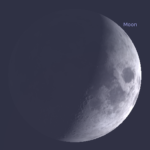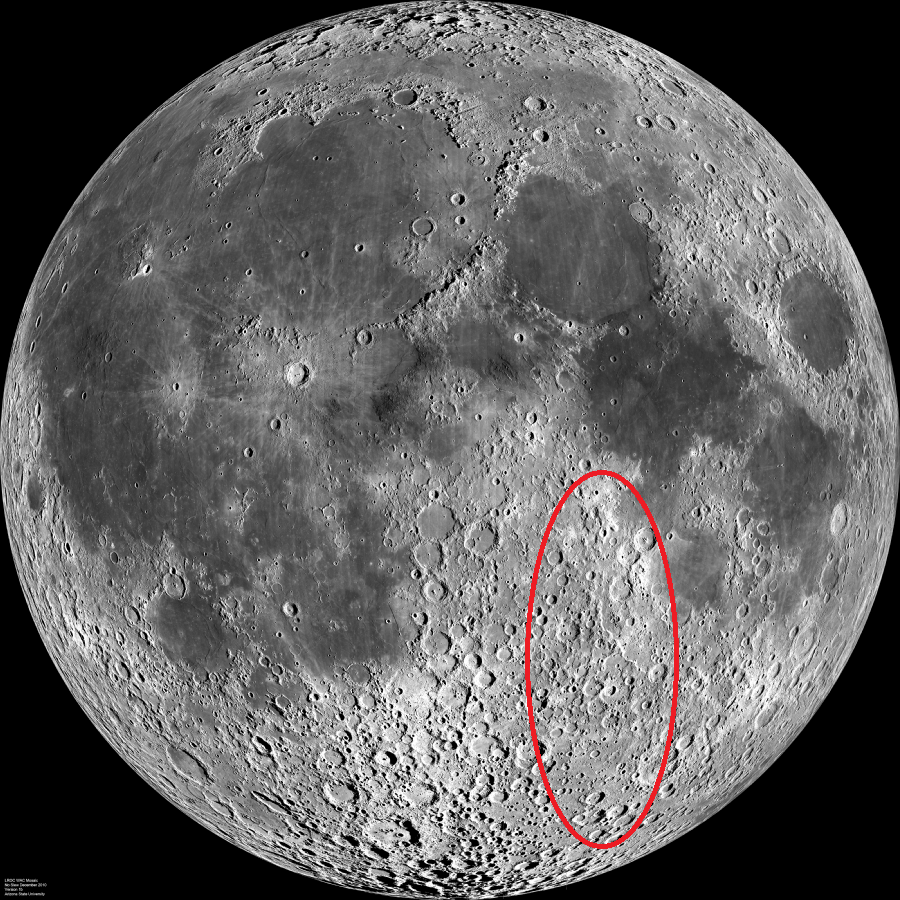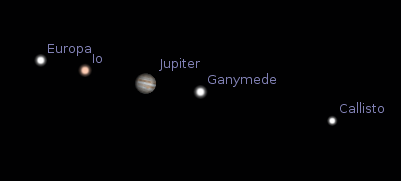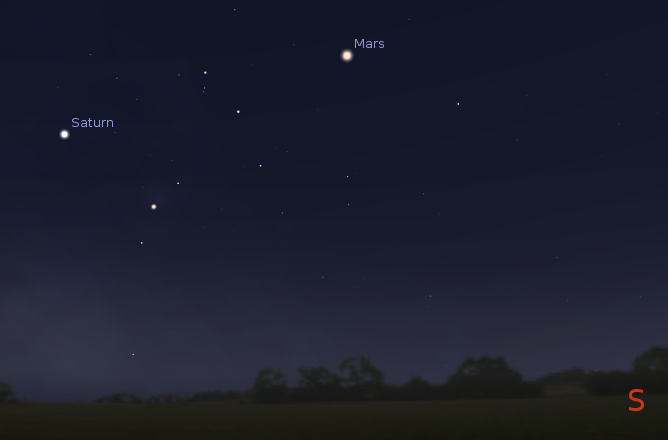There was patchy cloud on Friday evening (despite the forecast for clearing skies!), but we managed to get in a bit of telescope viewing for those members of the public who came out and patiently waited for clouds to pass and provide moments of clear sky. Thanks to our volunteers: Mark, who brought along some fabulous photographs of Jupiter to entertain our guests in the “waiting room” and William who escorted guests up and down the stairs to the observatory.

The viewing started at 9:30PM around dusk, so we first looked at the crescent Moon, which was 37% illuminated (see image at left). We focused the telescope on some of the craters at the terminator (the line between dark and light), as highlighted in the image below. Because those craters were being illuminated by sunlight coming from their sides, we were able to see the three-dimensional detail through the telescope.

The area circled in red shows generally which craters were observed at the June 10 viewing.
Moon image by LRO via Wikimedia Commons.

Jupiter and its moons as they were positioned on the evening of June 10.
Image from a Stellarium planetarium software screenshot (program available for free at www.stellarium.org)
As clouds covered the Moon, we shifted the telescope to Jupiter which was nearby in the sky. We were able to make out two brown bands on Jupiter and see all four of its Galilean moons, similar to the screenshot shown (although the view through our telescope was the mirror image due to the configuration of its optics). Once clouds covered up Jupiter, we showed the same guests some nearby stars to see how stars appear different than planets – twinkly and always as a pinpoint of light.
When the southwestern part of the sky completed clouded over, we moved our telescope to a clear spot in the southeast, which fortunately is where Mars was at the time! So the final guests at the viewing got to see the red planet before our view got clouded over at 10:15PM and we had to shut down for the evening.
If you didn’t get out to our viewing, you can still catch a glimpse of Mars in the sky with your own eyes throughout the month of June – you can even detect its reddish colour without the aid of binoculars or a telescope. Look for a long triangle formed by Mars, Saturn and a bright reddish star called Antares, as shown in the image below. After sunset, the planets will be in the southeastern sky and then move to the southwest during the night.

Mars, Saturn, and bright star Antares form a triangle in the southeastern sky in June. Image from a Stellarium planetarium software screenshot (program available for free at www.stellarium.org)
Our next public viewing is Saturday, July 9 from 10:00-11:00PM. Mars and Saturn will still be in the sky at that time, so we will hopefully get to spend more time looking at them.

